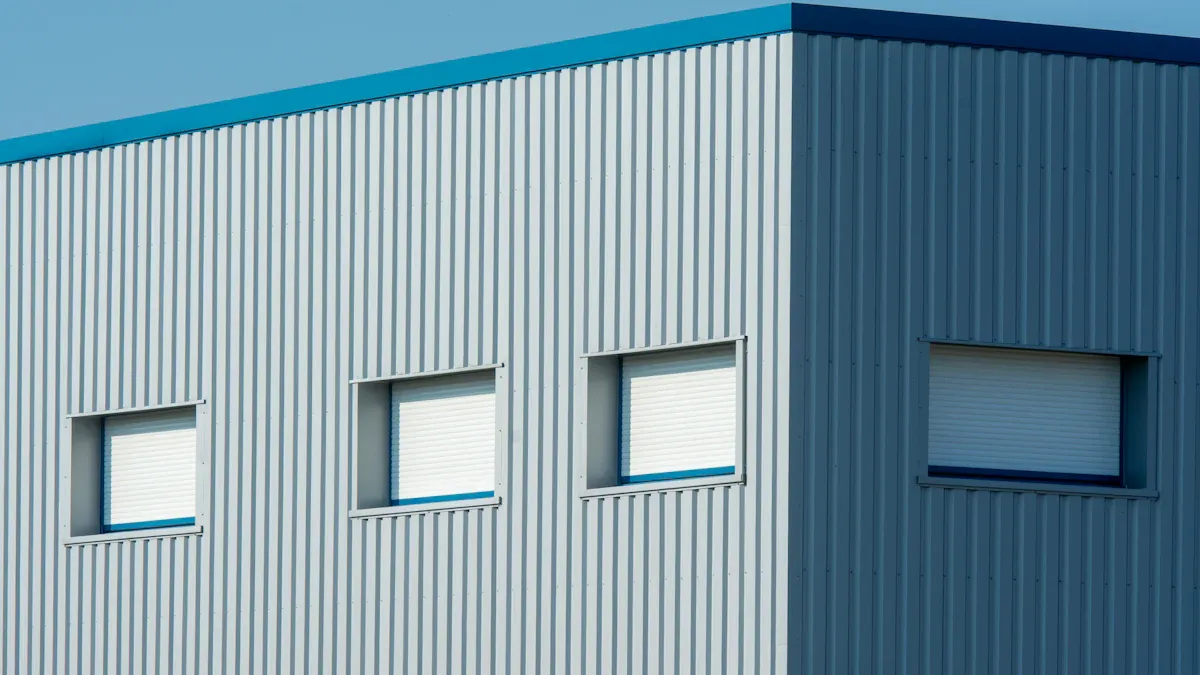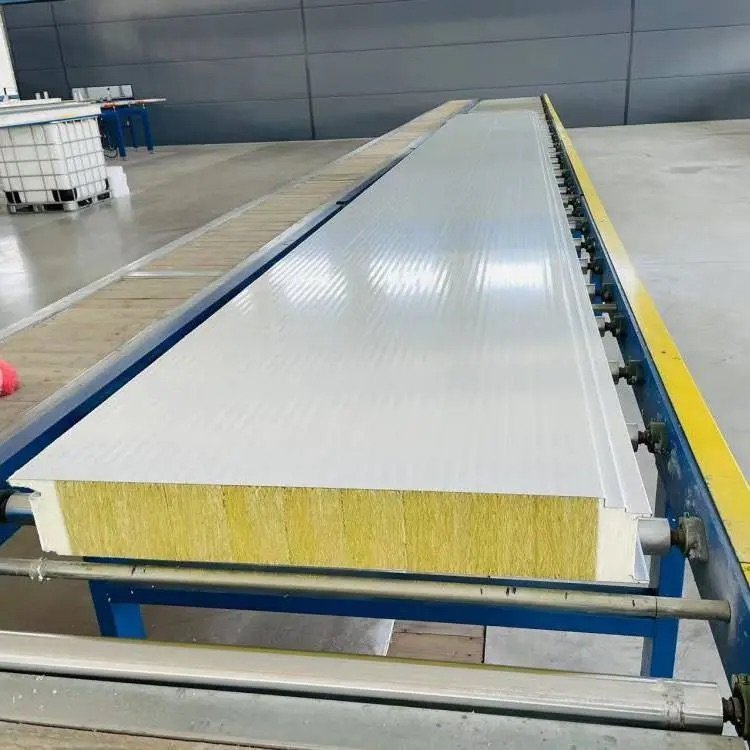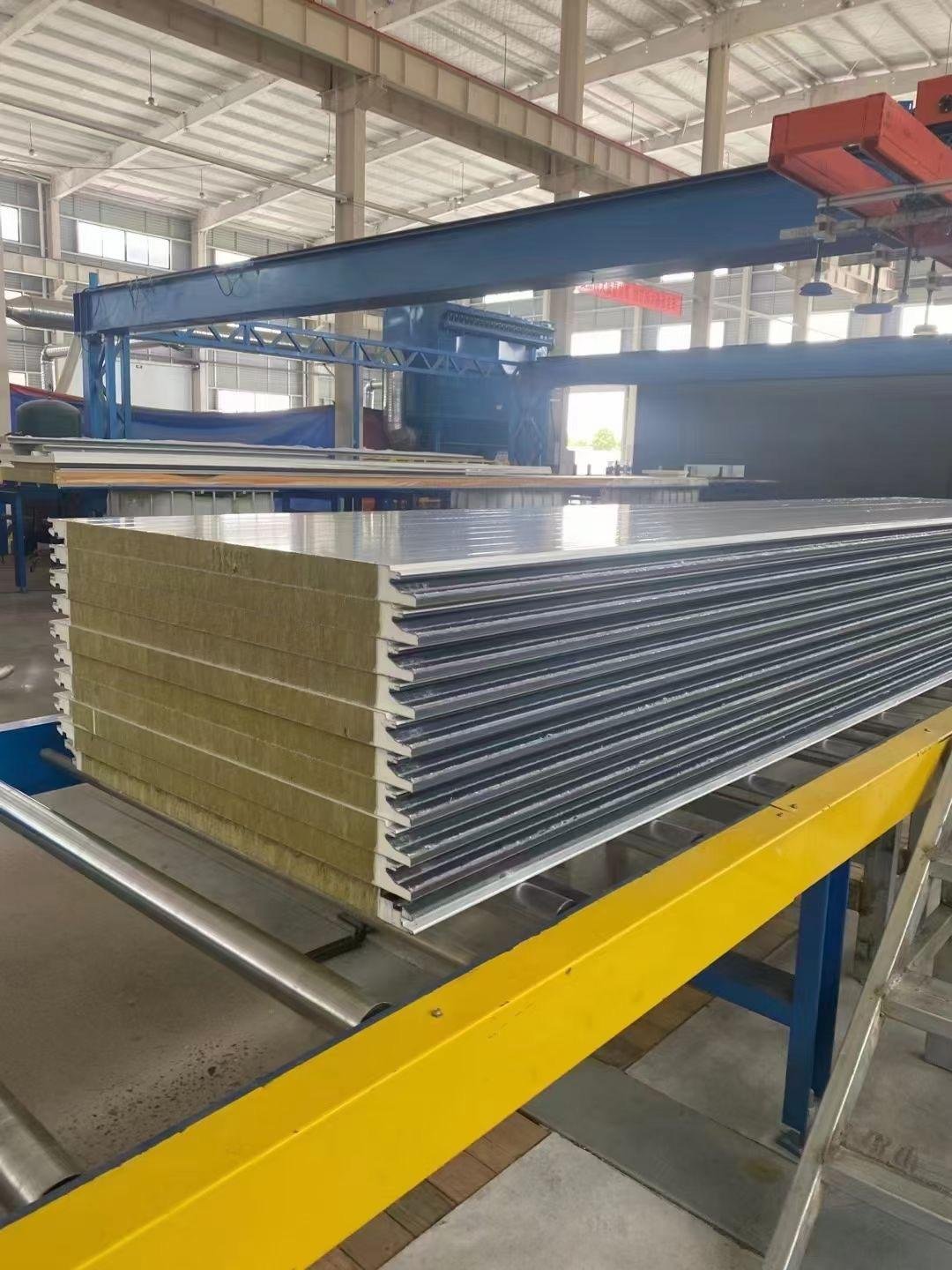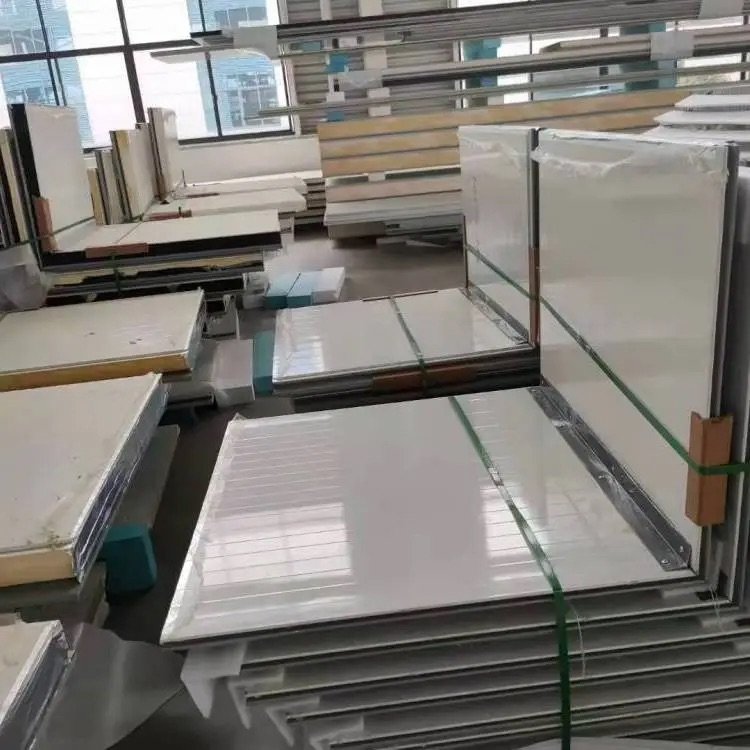
EPS sandwich panels have many good points for construction use. They are light, making them easy to handle. They also keep heat in or out, saving energy. They are cheap, which makes them more attractive. But, there are some downsides too. They do not resist fire well, which can be unsafe.
A study says the EPS core can catch fire easily. This can make fires worse in buildings.
These panels can soak up water and don’t break down quickly. This can harm the environment. Knowing these facts helps you choose wisely.
Key Takeaways
EPS sandwich panels are light, so they are easy to move and set up. This saves time and cuts labor costs.
These panels keep heat in or out well. They help keep rooms comfy and lower energy bills.
EPS panels are affordable. They take less time to install and need little care, saving money over time.
Though useful for many uses, EPS panels don’t resist fire well. They can also soak up water, which might hurt how they work.
Recycling EPS panels helps the environment. It reduces trash and supports green building ideas.
What Are EPS Sandwich Panels?

Definition and Composition
EPS sandwich panels are modern building materials used for insulation. They have three layers: two outer skins and an EPS core. The outer skins are usually made of metal like steel or aluminum. These metals make the panels strong and protective. The EPS core provides insulation and keeps heat in or out.
These panels follow strict rules to ensure safety and quality. In Europe, they need a CE mark to be sold. The European Standard EN14509:2013 says these panels must be factory-made and self-supporting.
Definition/Classification | Description |
|---|---|
CE Mark Requirement | Panels need a CE mark for sale in Europe. |
European Standard | EN14509:2013 defines them as self-supporting, double-skin panels. |
Key Features and Characteristics
EPS sandwich panels are light but very strong. They insulate well, saving energy in buildings. They come in different sizes and densities for various uses. For example, their thickness ranges from 100 mm to 180 mm. Densities vary from 65 kg/m² to 104 kg/m².
Specification | 100 Series | 120 Series | 150 Series | 180 Series |
|---|---|---|---|---|
Thickness (mm) | 100 | 120 | 150 | 180 |
Length (mm) | 2270/2440 | 2270/2440 | 2270/2440 | 2270/2440 |
Width (mm) | 610 | 610 | 610 | 610 |
Density (kg/m²) | 65±5 | 72±5 | 88±5 | 104±5 |
Fire Resistance Limit (h) | 4 | 4 | 4 | 4 |
These panels can resist fire for up to four hours. They are useful for homes, offices, and factories.
How They Are Manufactured
Making EPS sandwich panels is a careful process. First, polystyrene beads are expanded with steam to form foam. This foam is light but strong. Then, the foam is placed between two metal sheets. Strong glue holds the layers together. The panel is pressed and cured to make it durable.
This process makes the panels light and easy to use. They provide great insulation and are made with consistent quality. These panels are a dependable choice for many building projects.
Advantages of EPS Sandwich Panels

Lightweight and Easy to Handle
EPS sandwich panels are very light and simple to use. They weigh much less than regular building materials. This makes them easy to move and set up. Their pre-made design also saves time and effort during construction. This helps finish projects faster and lowers labor costs.
Light panels are easy to move and transport.
Faster building means projects finish quicker and save time.
Less effort for setup reduces the cost of labor.
These benefits make EPS panels a smart choice for saving time and money.
Excellent Thermal Insulation
EPS panels keep buildings comfortable by stopping heat transfer. They help maintain indoor temperatures, no matter the weather. This saves energy and lowers heating and cooling costs.
Compared to other materials, EPS panels insulate better. Their insulation value ranges from R-15 to R-45. They also reduce gaps where heat escapes, improving energy efficiency. Studies show buildings with these panels have fewer air leaks. The air change rate is 0.16 per hour, better than 0.34 to 0.39 for regular framing.
Using EPS panels makes buildings more energy-efficient and saves money.
Cost-Effectiveness
EPS panels are an affordable option for construction projects. They are light, easy to install, and save energy. This lowers both upfront and long-term costs.
These panels need less time and work to install, cutting costs. Their great insulation reduces energy bills, saving money over time. They are durable and need little maintenance, adding to the savings.
If you want a budget-friendly and efficient material, choose EPS panels.
Quick and Easy Installation
EPS sandwich panels save time during construction. They are very light, weighing much less than concrete. This makes them simple to carry and install. Their design allows for quick assembly, saving even more time.
Factories can make up to 3000 square meters daily. Delivery takes only 4 to 7 days. This speed helps keep your project on track.
Using EPS panels lowers labor costs and speeds up building work.
Versatility in Applications
EPS panels work for many building needs. They are used in homes, offices, and factories. You can customize their size and thickness for walls, roofs, or partitions.
They are great for cold storage because they keep temperatures steady. Temporary buildings like event halls also benefit from their light and portable design.
This flexibility makes EPS panels useful for many projects.
Eco-Friendly Aspects
EPS panels are good for the environment. They can be recycled, reducing waste. They also help buildings save energy for a long time.
These panels stop mold and mildew, keeping air clean indoors. This makes them a healthier choice for homes and workplaces.
By using EPS panels, you save energy and support green building practices.
Disadvantages of EPS Sandwich Panels

Limited Fire Resistance
EPS sandwich panels have a big issue with fire safety. The EPS core can catch fire and spread flames. Some panels have fireproof layers, but they may not stop fire completely. This makes them less ideal for buildings needing strict fire safety.
Fireproof panels with safe cores lower fire risks.
Flammable cores fail to stop fire, causing more danger.
Fire resistance depends on the core and outer materials used.
Always check the fire resistance rating before using these panels. This ensures they meet safety rules and reduce risks.
Note: Tests show non-flammable cores are safer for fire protection.
Sensitivity to Moisture
EPS panels can absorb water, which lowers their performance. High humidity or water exposure can weaken the EPS core. This reduces insulation and energy efficiency over time.
Moisture can also cause mold, harming indoor air quality. If using these panels in wet areas, add waterproof coatings or seal them properly.
Tip: Regular checks can help find and fix moisture problems early.
Lower Structural Strength
EPS panels are not strong enough for heavy-duty use. The compressive strength of EPS concrete is under 10 MPa. This limits its use in load-bearing structures. It is not ideal for projects needing high strength.
High-performance EPS concrete is better but still not very strong.
Tests show other materials, like HPEPC, are stronger and last longer.
For strong structures, use other materials or combine EPS panels with tougher components.
Potential for Deformation
EPS sandwich panels can bend or warp in some situations. Their light design is helpful but not strong against heavy loads. Too much pressure or bad installation can make them lose shape. This bending weakens the panels and creates gaps in insulation.
Temperature changes also affect these panels. Hot weather makes the EPS core expand, while cold makes it brittle. These changes can loosen the bond between the core and outer layers. To stop bending, install the panels correctly and avoid extreme weather areas.
Tip: Check panels often to catch bending early and fix it.
Environmental Impact
The effect of EPS panels on the environment depends on their use. Making them uses petrochemicals, which harm the environment at first. But during use, they save energy and lower costs over time. The problem is they take a long time to break down after disposal.
Lifecycle Stage | Environmental Impact |
|---|---|
Production | |
Usage | Saves energy, reducing long-term costs |
Disposal | Hard to decompose, adds to waste |
To reduce waste, recycle or reuse old EPS panels. This helps the environment and supports green building ideas.
Chemical Sensitivity and Pest Issues
EPS panels can get damaged by certain chemicals. Solvents, oils, and some glues can harm the EPS core. Keep these substances away during setup or repairs.
Pests like termites and rodents can also cause trouble. They don’t eat the EPS core but can dig into it, making holes. This lowers insulation quality. Use pest-proof coatings or barriers to protect the panels.
Note: Store and handle panels properly to avoid chemical and pest damage.
Common Uses of EPS Sandwich Panels

Homes and Commercial Buildings
EPS sandwich panels work well in homes and businesses. They are flexible and efficient. These panels are often used for walls because they keep heat in and block noise. Builders like them because they are light and easy to install. This speeds up building projects. You can change their size and thickness to fit different designs.
Wall panels are popular because they save energy and last long. They also make buildings stronger and protect against bad weather. Roof panels are becoming more common too. They save energy and are quick to set up. These features make EPS panels a top choice for modern buildings.
Cold Storage and Freezers
EPS panels are great for cold storage and freezers. Their core stops heat from moving, keeping the inside cool. This helps save energy and keeps temperatures steady. The panels fit tightly together, stopping air leaks and saving more energy.
They also don’t let heat escape easily, which helps control temperatures. The core stops water vapor, so no condensation forms. This keeps the air clean. Whether storing food or keeping things cold for work, EPS panels are a dependable option.
Factories and Industrial Buildings
Factories and industrial buildings use EPS panels more and more. They meet global energy-saving rules, making them good for places needing steady temperatures, like medicine factories or cold storage. These panels have U-values as low as 0.18 W/m²K, better than older materials.
Their light weight and strength make them simple to install and care for. Industries like them because they meet strict insulation rules, especially in areas like Europe and Asia. For building or manufacturing, EPS panels are a smart, cost-saving choice.
Temporary and Prefabricated Structures
EPS sandwich panels are great for temporary and prefab buildings. They are light and easy to set up, making them perfect for quick projects. These panels can be used for temporary homes, event spaces, or modular offices. They keep buildings comfortable, even in very hot or cold weather.
Using these panels saves time and money. For example, India’s Pradhan Mantri Awas Yojana project cut labor costs by 30-40% with EPS panels. This helped finish 1.2 million homes earlier than planned. In Saudi Arabia’s NEOM project, 70% of temporary structures used EPS panels. Installation was 80% faster than with regular materials.
Project/Initiative | Key Results | Location |
|---|---|---|
Pradhan Mantri Awas Yojana | 30-40% lower labor costs, 1.2M homes done early | India |
NEOM Project | 70% EPS use, 80% faster installation | Saudi Arabia |
Post-earthquake reconstruction | 62% of new homes used EPS for earthquake safety | Chile |
Energy Performance Directive | Met energy-saving rules | European Union |
Rapid warehouse development | 45% of new warehouses used EPS panels | Southeast Asia |
EPS panels are also helpful after disasters. In Chile, 62% of new homes after earthquakes used these panels because they resist damage well. They are strong and save energy, making them good for emergency shelters.
Choosing EPS panels means saving time, cutting costs, and staying comfortable. Their flexibility and usefulness make them a top choice for modern building projects.
EPS sandwich panels have both good and bad points. They are light, keep heat in or out, and save money. This makes them great for cold storage or quick building projects. But, they don’t handle fire well and can soak up water. These panels can cut energy use by 30% and support eco-friendly ideas with recycled materials. For short-term or long-term use, think about your needs to decide if these panels work for you.
FAQ
What are EPS sandwich panels made of?
EPS sandwich panels have two outer layers, often metal, and a core of expanded polystyrene (EPS). The outer layers add strength, while the EPS core provides insulation and keeps the panels light.
Are EPS sandwich panels fireproof?
No, EPS sandwich panels are not completely fireproof. The EPS core can burn, but some panels have fire-resistant coatings to lower risks. Always check the fire safety rating before using them.
Tip: Choose panels with non-flammable cores for safer options.
How long do EPS sandwich panels last?
If cared for properly, EPS sandwich panels can last over 20 years. Regular maintenance, like sealing against water and fixing damage, helps them stay durable.
Can EPS sandwich panels be recycled?
Yes, EPS sandwich panels can be recycled. The EPS core can be reused to create new items, cutting down waste and promoting eco-friendly building.
Where can you use EPS sandwich panels?
EPS sandwich panels work in homes, offices, factories, cold storage, and temporary buildings. They are flexible and can be used for walls, roofs, or partitions in many projects.
Note: Adjust the panel size and thickness to match your needs.








